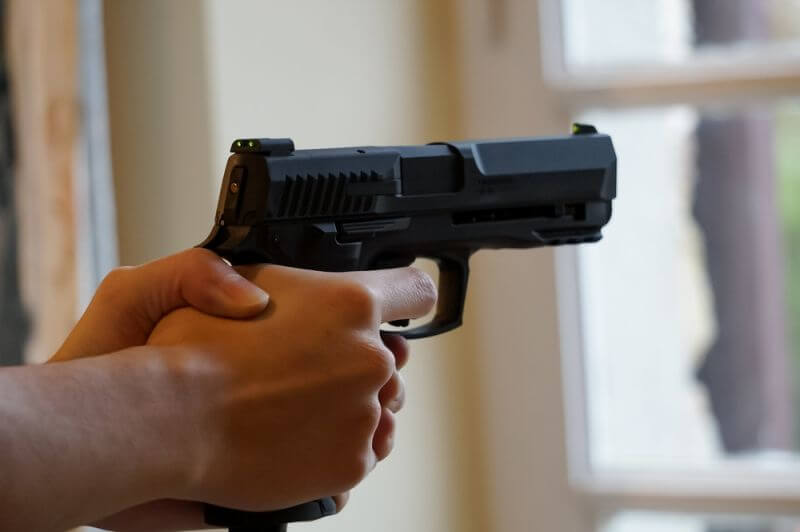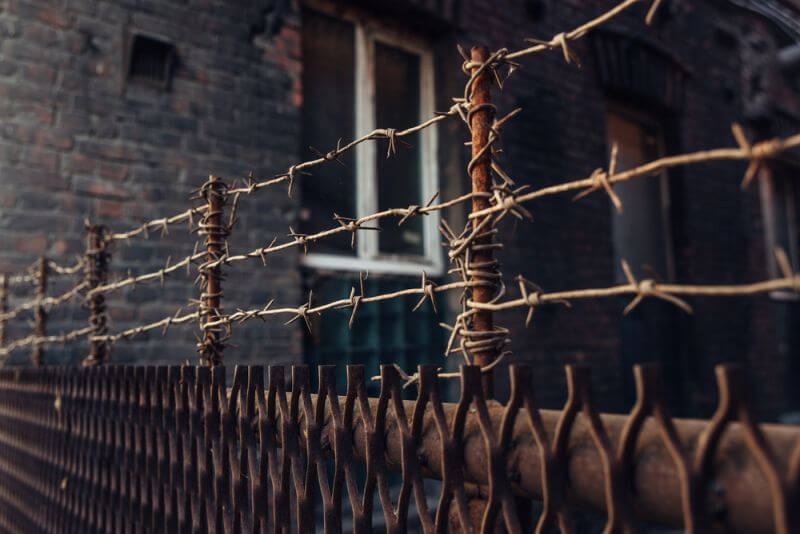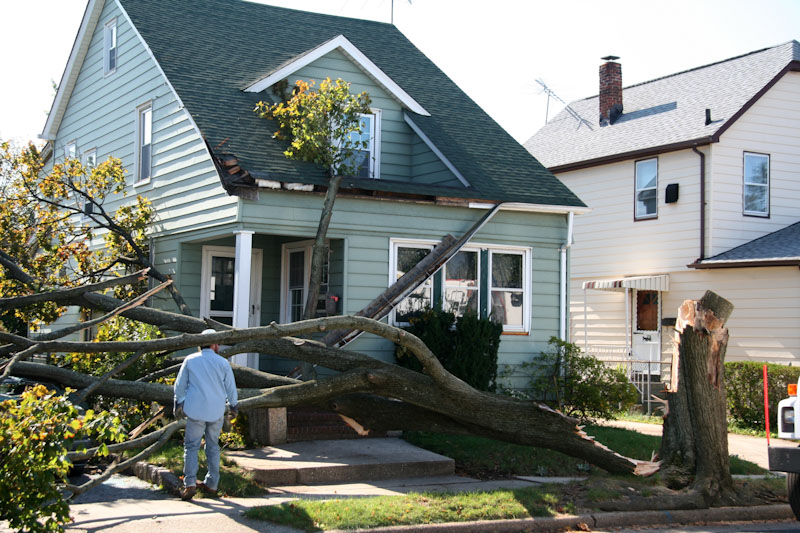There are places and subjects where what we say and what we do as preppers don’t necessarily line up. Looking around, I’d have to say that home defense is one of them.
It’s not that we don’t talk about home defense, nor is it that we ignore the reality of roving gangs looking for food in the wake of a disaster. It’s that most of us haven’t thoroughly thought out what we need to do to defend our homes. There’s a little too much “High Noon” and not enough infantry tactics in our thoughts about home defense.
I hope it never comes to the point where we need to defend our homes and families from that sort of armed assault. But I can’t live in a fantasy of wishes and rainbows. We’ve already seen what happens in the looting and lawlessness that can come in the wake of a major disaster, and that’s not even a TEOTWAWKI event. If criminals break into homes in the wake of a hurricane, imagine when those people are desperate for food and other necessities.
That’s why a realistic plan for defending our homes is a necessity. I’m talking about something detailed, something thought out ahead of time, detailing what every member of the family or survival team will do, including how that plan might change if someone is absent.
Any gang worth half their salt is going to scout out your home before attacking. So if your bug in plan includes going somewhere to retrieve water every day, you can be sure they’ll find that out and probably attack your home while you are away.
Let me make one thing clear, right here. If your plan is to stand between your family and the gang attacking your family while your family cowers in a “safe space” behind you, you’ve got a foolish plan. All that plan will do is ensure that you’re dead before your home is robbed. As a man, I can understand taking a stand like that; but as a former military officer, I recognize that one person can’t hold their ground against more than possibly two others, at the most, and expect to survive.
Unfortunately, Hollywood has given us an unrealistic picture of fighting, where we see one super-soldier take on a platoon of bad guys, killing them all without suffering more than a scrape. That’s not realistic, and anyone who is trained as well as Rambo will tell you not to try it. They have a realistic enough view on combat that they wouldn’t try it themselves unless forced into it.
That means that everyone in your family who is old enough and big enough to shoot a gun should not only be trained to do so but trained how to do so in the best possible manner to avoid getting hit in the process. While I’m not too fond of the idea of teaching our kids to fight, as if we were trying to make future terrorists out of them, I hate even more the idea of them dying because they can’t.
Let me say here that my dad never taught me to fight as a child. That may not seem like much, but it caused me much grief in middle and high school. My brother and I were bullied, and because I couldn’t defend myself, I received plenty of lumps without dealing many out myself.
Granted, that’s a different level of fighting than what I’m talking about here, but the principle still applies. I haven’t taught my kids street fighting, but I’ve taught them all how to use a gun and do so effectively. I even gave one daughter and her husband matching pistols for a wedding present. I know that my kids can defend themselves and their kids, should they ever need to.
Let’s Talk Legalities
Before going any further, I want to take a moment to talk about the legalities of defending your home. I hear an awful lot in the prepping community about shooting to defend home and family, which seems to be written from the viewpoint that there will be no law in place, so there will be no repercussions from killing someone in self-defense. While that possibility does exist, we’re much more likely to face a situation where law and order are overwhelmed with the situation but still in place.
In that case, chances are pretty high that you’ll have to face court if you are forced into a situation where you are forced to take a life in self-defense. For that matter, even if there is no law and order in place, you can be sure that there will be those around who are taking notes and who will want to be sure that when things return to some semblance of normal, “justice” is served against anyone who was forced to defend themselves.
With that in mind, it only makes sense to ensure that anything we do to defend our families is done following the law and that we can prove that it was. Fortunately for us, it is a principle of American law that we can use deadly force in self-defense and usually defend others. Some states even add the protection of property to that right.
Here’s the kicker, though. While it is legal, it is up to the courts to pass judgment, after the fact, as to whether or not the action was indeed in self-defense. The essential criteria are that force was in response to an imminent threat of life and limb. That means that there was a threat that you or a family member would be seriously hurt or killed if you didn’t take action RIGHT NOW!
That means that the attacker has already done something or threatened to do something that they can do. If they’re in your home and have a weapon in their hand, facing you, that’s generally considered enough. But what if they don’t?
If you’re stuck dealing with a group of armed attackers coming against your home, then you can’t wait until they break in to start defending yourself. On the other hand, you can’t start shooting indiscriminately. You have to allow them to take the first violent move, such as being on your property and taking a shot at your house. Until then, you don’t have proof of their violent intent.
The idea of playing sniper and shooting at them before they arrive is a sure way to prove that you are the aggressor and haven’t acted in self-defense. So unless they’re shooting at you from a block away, I wouldn’t bother with the sniper rifle.
One possible solution to protect yourself legally is to appoint one family member as the “recorder” who will take a video of the event, ensuring that you have evidence to bring into court. It needs to be someone who knows what they are doing and will capture the right things, such as the aggressiveness of the invaders, showing that they instigated any fight that occurs.
The other thing to do is to do an after-action report as soon as possible after the attack. The idea is to catch everyone’s memory of the incident before they start forgetting details. While their testimony may be a bit confused, police know that this is the best way to get the most accurate information.
Passive and Active Defenses
Your defensive plan must include a combination of passive and active defenses, especially if you are faced with a situation where a small gang of people attacks your home. You will probably need to keep the attackers outdoors while you fight from inside your home, giving yourself the tactical advantage. But to do this, you need to make sure that they can’t just kick your door open and come waltzing in.
Unfortunately, standard home security methods aren’t designed to keep determined people out; they’re just designed to keep out burglars who don’t want to attract attention to themselves by making too much noise. Kicking open a door or putting a rock through a window isn’t all that hard; it just makes a lot of noise, and it’s the kind of noise that attracts attention.
The kind of passive defenses you need is more along the lines of “bar the gate, the Huns are here,” something that they aren’t going to get through quickly. That will give you the time to defend your home and might cause them to start the ball rolling while they are still outside and you’re inside.
No passive defense system is perfect, so don’t expect yours to be. If it can buy you time so that you can make a stand while they are still outside, it has done its job. It’s a whole lot easier to defend your home as people are trying to break in than it is to protect it once they’ve breached your walls.
The Plan
Okay, now that we’ve covered all that, what does your defensive plan need to include?
The idea is to write out what every member of your family or survival team will do when you are attacked. Who is in charge, where does everyone goes, and what do they do when they are there.
Keep in mind that even while everyone in your family who is old enough to handle a gun should be trained to be a shooter, that doesn’t mean that everyone should be on the firing line. Some people cannot operate under such circumstances, pulling the trigger if it means taking someone else’s life. Put those people to work doing other things, like hauling ammo to those who are shooting, but don’t force them to be shooters themselves.
One of my daughters (not the one I gave matching pistols to as a wedding present) knows that she is psychologically or perhaps emotionally unable to take another person’s life in defense of her own. That might change when it comes to her daughters, but for now, that’s her stance. I respect that, and when she was living in my home, I had no intention of forcing her onto the firing line. I assigned her to be our family medic if we ever were in such circumstances, as the only family member who knew more about first aid (me) would be busy fighting off the bad guys.
There are also other essential things to do in the firefight, besides shooting a gun. If your home is being attacked from the front, you need a lookout watching the back to ensure that nobody is trying to sneak in that way. You also need at least one runner, who will carry messages and ammo to whoever needs them.
The following essential item is defining your fighting positions. Ideally, you want everyone to be in a place that serves as cover, not just concealment. But there isn’t much in a home that serves as cover from bullet fire. Even brick can be easily punctured by anything more than a .22LR. So unless your home is made of rock or concrete, you should probably plan on reinforcing the walls under the windows that you are going to use as firing positions with sandbags.
Any home built to code should support a one-foot thick, three-foot-high sandbag wall.
The most important part of this plan is dealing with when to shoot and who makes that determination. If you want to defend yourself on the grounds of self-defense legally, you must make sure they take the first action. Everyone needs to understand this, as well as understanding what “first action” looks like.
One way of handling this problem is to have everyone hold their fire until the head of the household or another designated “field commander” fires the first shot. That puts the decision in the hands of one person and hopefully prevents the problem of people shooting too early.
When it does come time to shoot, everyone needs to understand that the goal is to break the attack, not necessarily to kill as many people as possible. Still, doing the latter can help accomplish the former. So everyone should shoot at as many targets as possible, as fast as possible, giving the attackers a sensory overload to scare them off.
While this is going on, family members who are most likely able to keep their cool under fire should concentrate on finding the leaders and taking them out. All you have to do to find them is look for those who are shouting orders and trying to motivate others. Even if they aren’t “official” leaders, they will be fulfilling a leadership role. That’s enough. Taking out the leaders is likely to make the others decide it’s a good day to be anywhere else.
Don’t Forget an Escape Plan
Finally, your defensive plan has to include an escape plan. None of us can foresee the future, so we don’t know what is coming down the pike. That means we can’t tell if we’re going to win the engagement or lose it. We’ve got to know when it’s time to break off the fight and bug out.
This part of the plan needs to include communicating to everyone that it’s time to bug out without letting the enemy know. You’ve also got to have a plan for breaking off contact with the enemy. Who is going to be the rearguard? Can you set a surprise trap for them, which will slow them down, giving you the moment you need to escape? Even a barricade that can be dropped in place can help to slow them down.
Along with that, you need an escape route that will offer at least some concealment so that they can’t see where you are going. Bug-out bags and other gear to grab should be readily available along the exit route at the last moment. Establish a rallying point for everyone to meet if you don’t all manage to leave together.
From here, you’re moving into your bug-out plan rather than your defensive plan. So make sure that the two dovetail nicely together. While you may change your mind and circle back to retake your home, that’s a decision to be made at the moment. For planning purposes, you want to be sure that you can get away if that’s what it comes to.










Ron Marriner | July 6, 2021
|
it would help to have a protective sheet under the weapon
Bill In Idaho | July 6, 2021
|
Bill, this is certainly a Tough group of questions – For Everyone ! Lets look at – 1.) Complete Preparation – 2.) Common Sense – 3.) Sufficient Training – The Right Kind ! 4.) Mental Conditioning, And 5.) The Whole Family is “On Board” .
Illini Warrior | July 7, 2021
|
One of the keys to a good home defense plan is having the resources available to harden your home >>> anyone familiar with pre-hurricane prepping knows how quik the large sheet building materials sell out – not to mention something like fencing materials, barbed wire, outdoor lighting, sandbags, and loose fill materials …
Papa | July 7, 2021
|
Bill, a very good outline for a plan. Being retired Army I have my own ideas on all this and already have my plan in place. Mostly I revert back to training and experience. In a SHTF situation law enforcement will be non-existent and once engaged it’s a moot point. I am not a hero. I plan to defend to a point and then allow my folks to be pushed out. Once the attackers feel confident and settle in I will be back (part of the plan). Trust me, no one walks out and I take my place back without a fight.